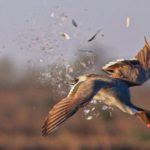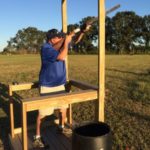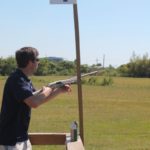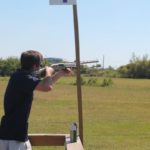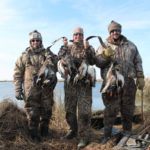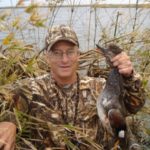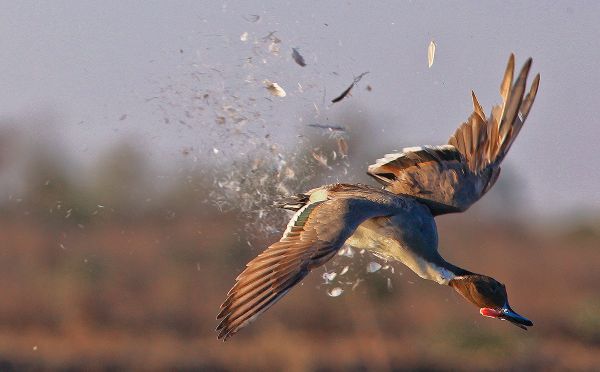
Practice these tips from this shooting expert to improve your wing shooting to the next level — and show up your buddies on your next duck-hunting trip.
We’ve all been there: Birds glide in over the decoys ever so gracefully, shots erupt from the hidden hunters but nothing falls.
The excuses that inevitably ensue would make any politician proud.
“My barrel got caught in the grass!”
“My hat bill covered my eyes.”
Yet another hunter is convinced his shells are blanks.
And on and on they go, often ranging from “I fell in a hole when I went to stand up” to “they were too close!”
An outing with buddies in the blind is certainly about the camaraderie — even at the expense of your pals — but the bottom line is missed shooting opportunities often result in fewer birds bagged than the hunt might have presented.
But with a few adjustments and an improved pre-shot awareness, you just might start to put a few more birds on the strap.
Kane Altazin is a life-long bird hunter with a passion for year-round shooting sports. Having found a knack for putting birds on the ground and turning clays to dust, the Baton Rouge native began offering pointers to shooters, and that ultimately led to a part-time shooting instructor role in recent years.
Be it beginners just taking to gunning or experienced shooters tweaking their mechanics, Altazin has helped hunters and sport shooters alike put more X’s on the score sheet as well as beaks on the strap.
He offered a few observations about what factors most commonly result in missed shooting opportunities.
“Gun mount is probably the primary factor in missed birds,” Altazin said. “Most shooters don’t get the gun mounted properly. You’ve got to get your eyes aligned properly with the barrel and your cheek down on the stock.”
Altazin said that without the proper mount you’re not shooting where you’re looking, and you’re missing before the trigger is even pulled.
This difficulty can often be exacerbated by heavy clothing typical of late-season hunts.
Fortunately, making proper gun mount second nature can be accomplished while at home in the offseason or between hunts.
“One exercise I commonly recommend to work on the mount is placing a small flashlight in the end of the barrel and practicing the mount in a dark room,” Altazin explained. “When the gun is mounted properly to the shoulder, you should find yourself looking where the light is pointing.”
Your cheek, Altazin noted, should be placed right against the stock to properly line up your eyes with the barrel.
“Once you’ve located right where your gun needs to be, it’s a good idea to practice it over and over to develop consistency with making the proper placement,” he said. “This is critical when it’s time to fire with all of the excitement of a real hunt.”
Altazin noted that placing the butt of the gun in the “pocket” found between the shoulder blade and collar bone is critical to form a solid foundation for the mount.
Firing a gun butted too low, such as on the bicep, can make for a painful experience and some ugly bruising. And you’ll likely miss.
Once ready to transition to mounting while following a target, be it bird or clay, Altazin encourages shooters to track the target with the gun while going up to the mounted position.
“You’ll want to move the barrel to follow the bird on the way up so you end up mounting where the bird is headed and not where he’s been,” he said.
In other words, Altazin’s approach entails mounting while keeping up with the target, rather than trying to quickly catch up to the bird that’s likely passed you by.
Though eye dominance can vary significantly between shooters, most should shoot shotgun with both eyes open, according to Altazin.
“Keeping both eyes open will give you much better depth perception, which actually doubles as a range finder when looking down the barrel.”
Even so, some might find a particular combination of eyes open or closed might be just the ticket for them — just confirm that your sight picture is aligning with where you’re pointing the barrel.
Once mechanics are established, it really comes down to familiarity with your shotgun as much as any other factor.
“Most people just don’t take enough time with their gun to be familiar with the safety placement and the feel of the trigger area in hand,” Altazin said.
That resulting uncertainty often leads to the urge to prematurely shoulder the gun prior to the shot being called, often flaring working birds.
“Everyone wants to get their guns ready early, and too often they’ve also got their barrel up in the air,” Altazin noted. “I always have my gun at my shouldering side in the blind, with my trigger hand around the trigger guard when calling at working birds that are starting to get close.”
He said having that hand familiar with the trigger and safety operation gives him the confidence to quickly get underway with the shouldering and shooting process once the shot is called.
“You don’t want to be fumbling for the safety with birds over the decoys and everyone else shooting,” Altazin pointed out.
Proper setup for a shot is not limited to the upper body, but many shooters fail to establish a solid stance when making the shot.
“You want to make sure you’ve got a solid shooting platform, whether in a fixed blind, on land or in a boat,” Altazin said. “Always clear an area for your feet in the blind so you’re not stumbling around when you should be shooting.”
This insistence of a proper shooting platform not only provides a sound foundation for your mechanics and proper balance but it also contributes to safe handling of the gun. Someone falling down with a loaded gun in hand is the last thing you want in the close quarters of a blind.
Long-time Delacroix area guide Mike Smith of Louisiana Marsh Guide Service echoed many of Altazin’s observations, adding that miscues he commonly sees from his clients are typically a result of over-gunning and over-choking.
“Many of my clients come in with a false sense of confidence because they’ve bought into the hype of technology but aren’t comfortable or confident enough with their guns,” Smith said.
He insists that today’s marketing campaigns are leading hunters to try to purchase shotgunning skills without the experience to put the technology to good use.
“They think the use of 3 1/2-inch shells and extra-tight chokes will always make the birds fall, but too often that’s not the case,” Smith said. “I’ve tried just about every load and choke out there and still find myself coming back to a wide choke like improved cylinder or even cylinder and No. 2 to No. 4 shot from 3-inch shells.
“This combination is a great do-all setup from teal to gadwall and mallards, within reasonable range.”
Smith said he finds that most of his clients are so focused on shooting at a distance that they’ll commonly miss the layup birds over the decoys.
Although miscues are an inevitable aspect of wing shooting, nearly all waterfowl hunters can stand to occasionally re-evaluate their approach to getting the gun shot-ready and putting the pattern on target.
A few small adjustments in mechanics or gun placement, while also ensuring you’re matching the correct load to the given situation, might be all that’s needed to help you turn frightened birds that fly away into dead birds that go in the pot.
6 shooting tips for better gun handling in the duck blind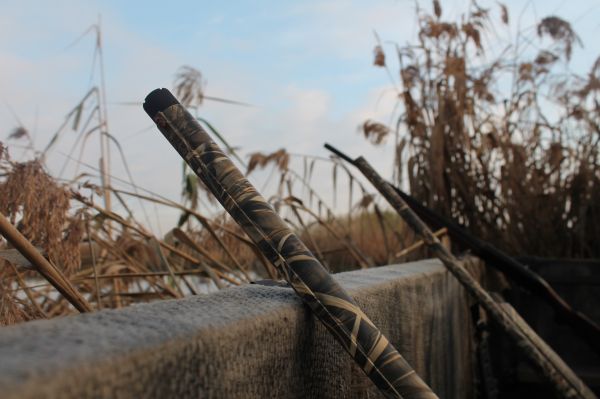
- Keep your gun at the ready, with the butt on the side you shoot from and the barrel pointed in a safe direction.
- Always keep safety engaged when not shooting.
- When getting settled in the blind, make sure the area around your feet is clear of objects or holes, giving you a stable platform from which to shoot.
- Make sure your gun has a clear path to your shoulder without getting caught in blind material like netting or grass.
- Ensure you have a clear path to swing the barrel once shouldered.
- Always be mindful of your shooting zone, and if a bird leaves your zone, don’t follow it to your buddy’s — no matter how many leg bands the duck sports.
